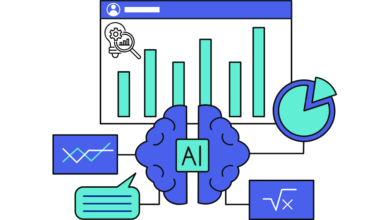Artificial intelligence is shaping the future, coming closer to true consciousness every year. Is AI capable of understanding language the way we do, though? There are countless stories of AI assistants seemingly spying on a user or eavesdropping. Sometimes they can predict our words or preferences with eerie accuracy.
Despite this behavior, experts remain skeptical that AI can actually comprehend human speech. To understand why we must analyze the current state of AI and the technology behind it.
The State of AI
Today’s AI models are capable of some incredible things. It has gained a solid foundation in human speech, from translating different languages to writing poetry.
For example, OpenAI’s GPT-3 model can impersonate historical figures and write code. Google’s LaMDA AI can do impressions as well and even provide factually accurate responses consistently. Google’s second AI project, MUM, displays even more advanced answers to questions, a function predicted to significantly impact search engine optimization.
Meanwhile, a humanoid robot has made headlines as the first AI to be granted official personhood. Hanson Robotics’ “Sophia” takes AI to new heights, complete with a physical human-like body and a face that can convey emotions. Sophia has been granted citizenship in Saudi Arabia, and the United Nations awarded her the title of Innovation Champion, making her the first nonhuman to receive any such designation from the UN.
AI has found its way into everyday roles, as well. Thanks to machine learning and natural language processing, chatbots are making a difference for countless businesses. Customer service AI has become especially popular in retail, health care and finance. Companies are also using AI for logistics, quality control and employee training.
The Problem of Context
All these advances in AI appear to indicate it has a human-like understanding of language. However, when we dig a little deeper, there are important indicators that this is not the case.
A few technologies coexist to allow AI to process, understand and replicate human speech. Natural language processing enables AI to decode the irregular speech patterns people use. Deep learning trains AIs’ neural networks to recognize them and understand how they operate. Machine learning allows it to adapt and refine its logic through user interactions.
None of this can create true comprehension. No AI can actually understand the context behind the words we speak, even if it might seem that way on the outside. For example, AI cannot understand things like possession and gender. It might be able to talk about food, but it does not grasp what it really is or why humans care about it.
AI is essentially just playing the game of language. Imagine traveling to another planet, and the locals teach you how to play a popular board game. You might be able to understand the rules and even win. However, you won’t understand the cultural significance of the game, the etiquette, or the history and meaning behind it.
This is how AI experiences human language, at least right now. It understands the rules of the game but lacks cultural understanding and depth. AI is simply mimicking the way we speak and the ideas we have, though it is a convincing performance. This reality means that although AI might be eavesdropping on us, it cannot understand the gravity or depth of our conversations.
Defining True Understanding
At what time does an AI become sentient? How will we know when AI has evolved to the point that it can truly understand what we are saying? Defining understanding is no easy feat. In many ways, determining what constitutes “sentience” is more an ethical and philosophical quest than a scientific one.
The 2021 film “Free Guy” created a buzz around this subject with a protagonist that was a self-aware, conscious AI video game character. In fact, one of the story’s central conflicts revolves around the legitimacy of artificial life. The conclusion seems to be that empathy, curiosity and creativity are central to what makes someone, or something, alive.
Unfortunately, AI is not nearly as close to “Free Guy’s” fictional model as it might seem. Moreover, today’s AI may not understand the mechanics of language as well as we think. Before creating emotional AI, we must first successfully create a generalizable version, which has a complete and nuanced comprehension of language.
The Final Frontier of Language
AI is changing the way we live, work and communicate. It bridges the gap between language barriers and helps businesses reach their customers. Nonetheless, AI still has a long road ahead before it gains an authentic understanding of human language. One thing is for certain, though — the final frontier of AI will be a quest to create emotion out of ones and zeroes, changing the way we define life forever.





It’s becoming clear that with all the brain and consciousness theories out there, the proof will be in the pudding. By this I mean, can any particular theory be used to create a human adult level conscious machine. My bet is on the late Gerald Edelman’s Extended Theory of Neuronal Group Selection. The lead group in robotics based on this theory is the Neurorobotics Lab at UC at Irvine. Dr. Edelman distinguished between primary consciousness, which came first in evolution, and that humans share with other conscious animals, and higher order consciousness, which came to only humans with the acquisition of language. A machine with primary consciousness will probably have to come first.
The thing I find special about the TNGS is the Darwin series of automata created at the Neurosciences Institute by Dr. Edelman and his colleagues in the 1990’s and 2000’s. These machines perform in the real world, not in a restricted simulated world, and display convincing physical behavior indicative of higher psychological functions necessary for consciousness, such as perceptual categorization, memory, and learning. They are based on realistic models of the parts of the biological brain that the theory claims subserve these functions. The extended TNGS allows for the emergence of consciousness based only on further evolutionary development of the brain areas responsible for these functions, in a parsimonious way. No other research I’ve encountered is anywhere near as convincing.
I post because on almost every video and article about the brain and consciousness that I encounter, the attitude seems to be that we still know next to nothing about how the brain and consciousness work; that there’s lots of data but no unifying theory. I believe the extended TNGS is that theory. My motivation is to keep that theory in front of the public. And obviously, I consider it the route to a truly conscious machine, primary and higher-order.
My advice to people who want to create a conscious machine is to seriously ground themselves in the extended TNGS and the Darwin automata first, and proceed from there, by applying to Jeff Krichmar’s lab at UC Irvine, possibly. Dr. Edelman’s roadmap to a conscious machine is at https://arxiv.org/abs/2105.10461